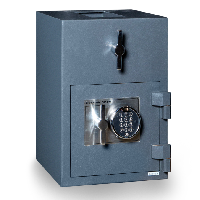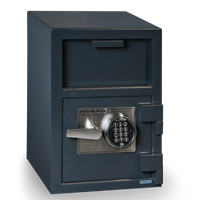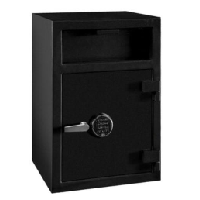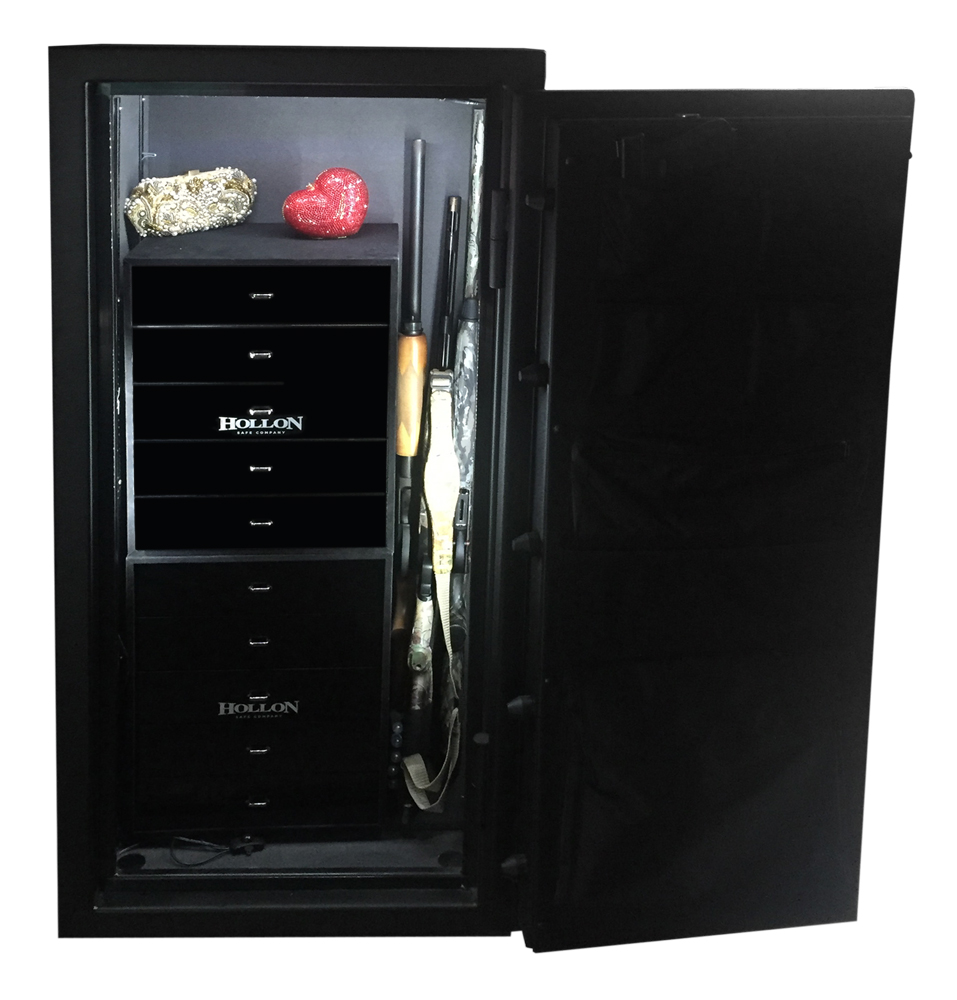Electronic safes are safes that use some type of electronic locking mechanism. There are two major types of electronic safes – electronic keypad and biometric. The first type, the electronic keypad, is opened by entering the combination to the safe on an electronic keypad similar to the PIN pads used on ATM or debit card machines. This makes opening the safe much more convenient than a traditional mechanical combination dial. In addition, some models support multiple combinations with multiple PIN numbers, allowing you to grant access to more than one user.
Electronic safes also use what is referred to as a biometric locking mechanism. A biometric locking mechanism uses some unique physical attribute to grant access to the safe. In the case of electronic safes that physical attribute is a person’s fingerprint. The user simply places their index finger on a special scanner for about a second, and if the fingerprint is a match the safe is opened. This scanner uses a laser to scan the fingerprint, much like the laser scanners used at grocery and retail stores to scan bar codes. The scanner converts the fingerprint information into a unique number using a special software algorithm, and if this number is a match the safe is opened. In addition, electronic safes that use a biometric scanner allow for more than one user to be “enrolled”. This is done by simply placing the scanner in the program mode and scanning the user’s fingerprint.
There are a number of other factors to consider when choosing electronic safes. One factor is the burglary rating. The burglary rating usually gives an indication of how long it would take a knowledgeable person (in other words, a locksmith) to break into a safe with common locksmith’s tools. While these ratings may seem to be for a short amount of time (common numbers are 5 or 10 minutes), most burglars do not have a lot of time on their hands. If you have a good overall security plan (such as an alarm system and surveillance system), then you can insure that a burglar will not have enough time to break into a burglary rated safe.
Electronic safes are also available with fire ratings to protect the contents of the safe in the event of the building catching fire. Fire ratings are specified in the number of hours that the safe can remain in fire conditions without the temperature inside the safe rising above a certain number. A common fire rating is a 1 hour 350 degree rating. This rating means that the safe could be exposed to a 1700 degree F fire for 1 hour, and the internal temperature of the safe would not reach more than 350 degrees F.
Another factor to consider when choosing electronic safes is what is to be stored in the safe. Important documents require a fire and burglary rated safe. Other delicate valuables, such as computer backup media, require a special media safe. A media safe differs from a regular safe in the fire rating assigned to it. A media safe is usually rated at 125 degrees F, rather than the 350 degree F rating for a document safe. This is because computer media is much more fragile and can be damaged at a lower temperature. Electronic media safes are also rated for a maximum humidity of 80% in fire conditions. In addition, they are designed to protect the media from dust, magnetic fields, and electrostatic charges.
There are also special electronic safes designed for the storage of guns (rifles and shotguns). Gun safes are larger than regular safes to accommodate the length of the guns. Models are available with electronic locking mechanisms as well as with burglary and fire ratings.
There are a two more features that should be considered when choosing electronic safes. One is an electronic locking mechanism with an audit feature. The audit feature tracks user access and allows an authorized person to view when the safe has been accessed and by whom. This information is displayed on a local display panel or, on some models, can be uploaded to a personal computer for viewing. One final feature, limited to electronic safes with electronic keypads, is a backlight so that the safe can be quickly accessed in a darkened room. This feature is especially important on gun safes, where the user might need access to the safe at night.
As you can see, there are a number of factors to consider when choosing electronic safes. Taking all of these factors into consideration before making your purchase will help insure that you choose the electronic safe that is right for your. Because a safe is more than just a metal box!





